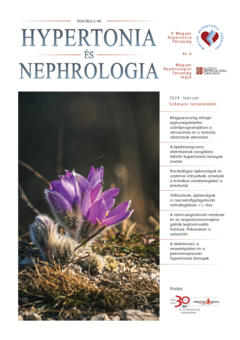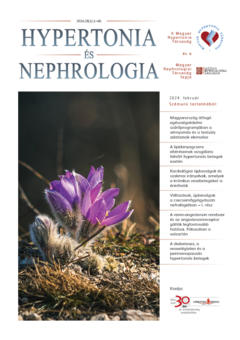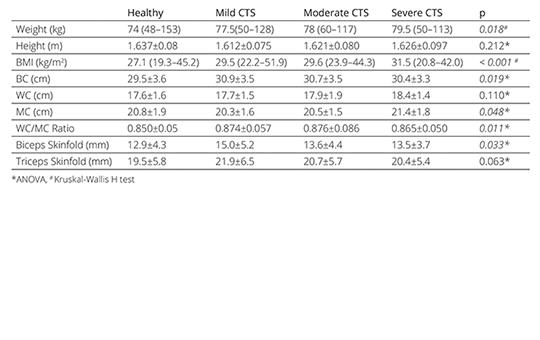The eLitMed.hu medical portal uses computer cookies for convenient operation. Detailed information can be found in the Cookie-policy.
Specialities
Diabetology
[Nationwide comprehensive health protection screening program in Hungary (2010–2020–2030 – MÁESZ) analysis of blood pressure and metabolic status]
[The “Comprehensive Health Protection Screening Program of Hungary 2010-2020-2030” (MÁESZ) (http://www.egeszsegprogram.eu) is the only complex screening program in Hungary, in which we aimed to map the health status of our country. Between 2010 and 2021, the screening program carried out in the truck was present in 2,406 locations nationwide and performed more than nine million screening tests for more than 280,000 citizens.]
[Investigation of lipid abnormalities in adult patients with hypertension using data mining method]
[Hypertension and hyperlipidemia frequently coexist, and their interaction amplifies overall atherosclerotic cardiovascular disease risk. We aimed to investigate lipid abnormalities and their associations with body mass index (BMI) in a large adult hypertensive patient population with the help of data mining.]
[Patients with diabetes, renal failure and perimenopausal hypertension]
[The determinants of cardiovascular (CV) morbidity and mortality is sympathetic overweight, which is the main risk factor for CVD. factors - hypertension (HT), diabetes mellitus (T2DM), renal function deterioration (CKD), dyslipidaemia and, in women, the perimenopausal status - significantly potentiates the adverse effects of diabetes, dyslipidemia, diabetes mellitus.]
[Novelties and guidelines in cardiology, which can affect patients with chronic kidney failure]
[In cardiological guidelines, many strategic drugs (ACE-inhibitor/ARB, ARNi, beta-blocker, MRA, SGLT2-inhibitor) have made their way into recommendations with 1A level evidence for the prevention and treatment of cardiovascular diseases, depending on the type and severity of cardiovascular involvement and the co-incidence of other various comorbidities in heart conditions. In this summary we are going to elaborate on the fundamental
characteristics of classes of medications with different mechanism of actions,
cardiological evidences for their applications, their effects on patients with chronic renal diseases –, including those with end-stage renal diseases-, focusing mostly on their common cardio- and renoprotective attributes and the cardiological guidelines and the recommendations for patients with chronic renal failure, without attempting to be comprehensive.]
[Association of upper extremity anthropometry and subcutaneus adipose tissue with carpal tunnel syndrome]
[Body mass index (BMI) is positively correlated with the frequency of carpal tunnel syndrome (CTS). However, there are different types of obesity, and the localization of adipose tissue differs between the genders. In this study, we purposed to investigate whether there was an association between the amount of local adipose tissue thickness and anthropometry in upper extremity with the presence and/or electrophysiological severity of CTS on both genders. ]
Comparison of pre-mortem 2D-3D ultrasound examination to post-mortem micro-CT of carotid arteries – first experiences
A prerequisite for the treatment of carotid atherosclerosis is the accurate measurement of the stenosis, that is most commonly evaluated by duplex ultrasonography. In this study, we aimed to verify the reliability of 2D and 3D ultrasonography, comparing the data to results of post-mortem micro-CT examination. Neurological patients with any life-threatening, presumably fatal neurological disease were enrolled.
1.
Clinical Neuroscience
Is there any difference in mortality rates of atrial fibrillation detected before or after ischemic stroke?2.
Clinical Neuroscience
Factors influencing the level of stigma in Parkinson’s disease in western Turkey3.
Clinical Neuroscience
[The effects of demographic and clinical factors on the severity of poststroke aphasia]4.
Clinical Neuroscience
Neuropathic pain and mood disorders in earthquake survivors with peripheral nerve injuries5.
Journal of Nursing Theory and Practice
[Correlations of Sarcopenia, Frailty, Falls and Social Isolation – A Literature Review in the Light of Swedish Statistics]1.
2.
3.
4.
5.








